<< Our Photo Pages >> Trendlebere Down - Multiple Stone Rows / Avenue in England in Devon
Submitted by AngieLake on Monday, 30 September 2002 Page Views: 10120
Neolithic and Bronze AgeSite Name: Trendlebere Down Alternative Name: Black Hill stone rowCountry: England County: Devon Type: Multiple Stone Rows / Avenue
Nearest Town: Bovey Tracey Nearest Village: Water / Haytor
Map Ref: SX76627928 Landranger Map Number: 191
Latitude: 50.600162N Longitude: 3.744732W
Condition:
| 5 | Perfect |
| 4 | Almost Perfect |
| 3 | Reasonable but with some damage |
| 2 | Ruined but still recognisable as an ancient site |
| 1 | Pretty much destroyed, possibly visible as crop marks |
| 0 | No data. |
| -1 | Completely destroyed |
| 5 | Superb |
| 4 | Good |
| 3 | Ordinary |
| 2 | Not Good |
| 1 | Awful |
| 0 | No data. |
| 5 | Can be driven to, probably with disabled access |
| 4 | Short walk on a footpath |
| 3 | Requiring a bit more of a walk |
| 2 | A long walk |
| 1 | In the middle of nowhere, a nightmare to find |
| 0 | No data. |
| 5 | co-ordinates taken by GPS or official recorded co-ordinates |
| 4 | co-ordinates scaled from a detailed map |
| 3 | co-ordinates scaled from a bad map |
| 2 | co-ordinates of the nearest village |
| 1 | co-ordinates of the nearest town |
| 0 | no data |
Internal Links:
External Links:
I have visited· I would like to visit
TheCaptain visited on 7th Sep 2022 - their rating: Cond: 3 Amb: 3 Access: 4 Getting from the road to find this row is a bit of a struggle through gorse and heather, and I initially found it hard to find. But there it is, not quite where I was expecting to find it, but as so often with a path running down beside it, and it has had much of the growth mechanically cleared from it. The large cairn at the top is completely overgrown, as is the top of the row, but I found a few fairly large fallen stones hidden underneath the overgrowth. Further down, the row becomes more cleared, but the stones are smaller, mostly flat on the ground, and many have been substantially damaged by the mechanical machines used to clear the gorse and heather. The bottom end again becomes lost in high vegetation. Amongst the disturbance is a large stone, facing across the rows, which looks as though it may have once been a terminal blocking stone. All in all a disappointment.
SandyG visited on 21st Jan 2017 - their rating: Cond: 2 Amb: 4 Access: 4 Car parking is available at SX 76661 79035. From the car parking area walk northward along the road verge for about 200m . The row is a short distance below (north) of the road.
AngieLake have visited here
Average ratings for this site from all visit loggers: Condition: 2.5 Ambience: 3.5 Access: 4
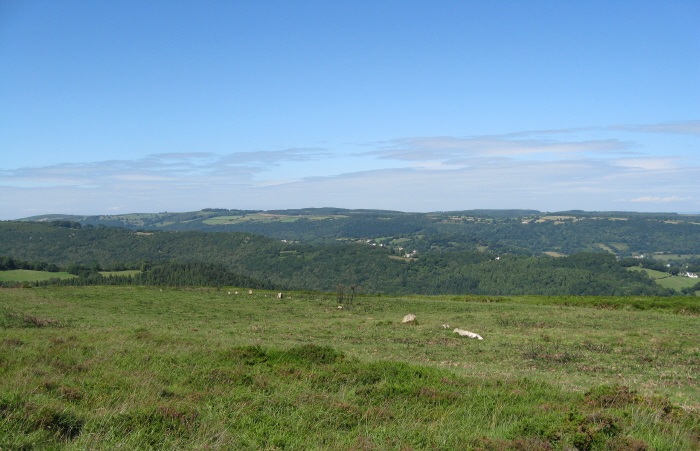
The 'way to go' to find Trendlebere Down stone row. (On my OS map - 'Outdoor Leisure 28 Dartmoor', its by the yellow road that leads north from Haytor Vale. I found a good parking space on the left, past North Lodge, and walked the rest of the way.)
Update August 2019: This stone row is featured on the Prehistoric Dartmoor Walks (PDW) website - see their entry for the Trendlebere Down Stone Row, which tells us: "A stone row 100ft. to the north of the Haytor-Manaton road. 18 stones of the stone row can be identified of which 9 are fallen and 9 upright stones. The fallen stones vary in length between 3'4" and 4'6"; the upright ones between 6" and 2'4".
It is also recorded as part of the record for Pastscape Monument No. 444981 (Bronze Age stone row, the remains of a cairn and the site of a cairn), as MDV8076 (Alignment on Trendlebeare Down) on the Devon and Dartmoor HER, and scheduled as part of Historic England List ID 1003056 (Stoner row N of Yarner Wells).
The row also has a record on the Stone Rows of Great Britain website: Trendlebere Down Stone Row, which includes a description, photographs and a plan of the row and its terminal cairns.
You may be viewing yesterday's version of this page. To see the most up to date information please register for a free account.
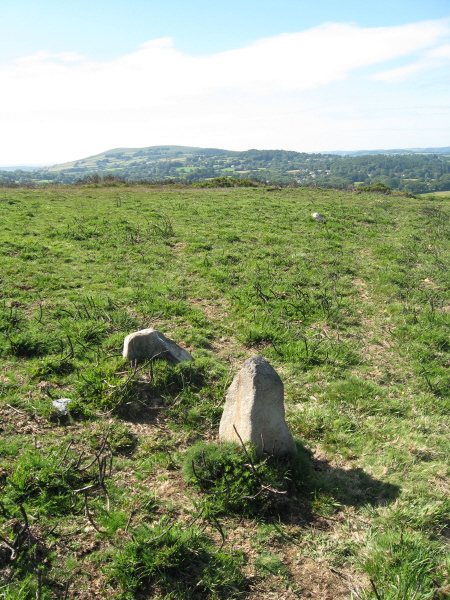
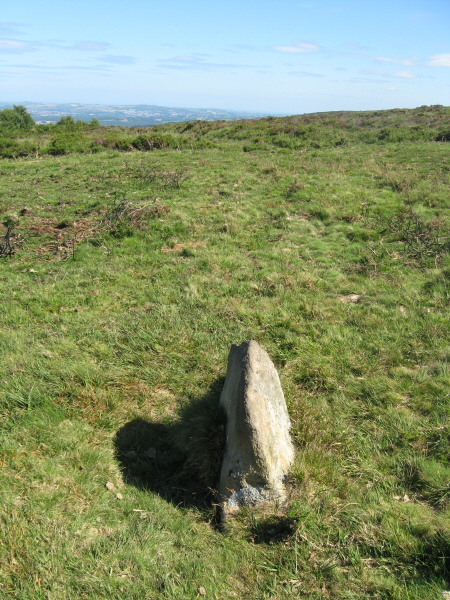

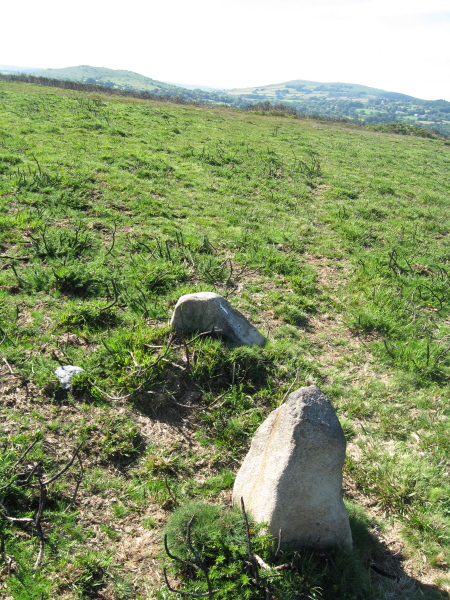
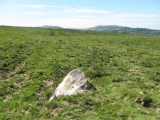


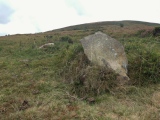






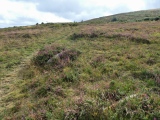
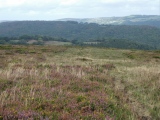

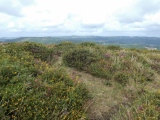






These are just the first 25 photos of Trendlebere Down. If you log in with a free user account you will be able to see our entire collection.
Do not use the above information on other web sites or publications without permission of the contributor.
Click here to see more info for this site
Nearby sites
Key: Red: member's photo, Blue: 3rd party photo, Yellow: other image, Green: no photo - please go there and take one, Grey: site destroyed
Download sites to:
KML (Google Earth)
GPX (GPS waypoints)
CSV (Garmin/Navman)
CSV (Excel)
To unlock full downloads you need to sign up as a Contributory Member. Otherwise downloads are limited to 50 sites.
Turn off the page maps and other distractions
Nearby sites listing. In the following links * = Image available
50m S 179° Trendlebere Down Stone Row Cairn* Cairn (SX7662079230)
637m SW 220° Black Hill Cairns* Cairn (SX762788)
1.1km S 179° Haytor Down Ring Cairn (SX76617814)
1.5km SW 223° Smallacombe Rocks Settlement* Ancient Village or Settlement (SX7558378211)
2.1km WSW 255° Hound Tor Deserted Medieval Village* Ancient Village or Settlement (SX74627878)
2.3km W 261° Hound Tor Enclosure* Causewayed Enclosure (SX74307897)
2.6km WSW 257° Hound Tor Ring Cairn* Ring Cairn (SX7409778770)
2.7km NE 42° Datuidoc's Stone* Early Christian Sculptured Stone (SX7850081274)
2.8km WNW 294° Bowerman's Nose* Rock Outcrop (SX74108046)
3.0km NE 40° Bishop's Stone (Lustleigh)* Ancient Cross (SX7860281532)
3.1km N 10° South Harton Cross* Ancient Cross (SX7724982273)
3.2km N 350° Hunter's Tor Fort* Hillfort (SX7616482412)
3.4km NNE 18° Higher Combe Cross* Ancient Cross (SX7776482535)
3.8km WSW 253° Chinkwell Tor Cairn* Cairn (SX7293078250)
3.9km SW 218° Seven Lords' Lands* Stone Circle (SX74127623)
4.1km SW 226° Top Tor Cairns* Cairn (SX7357476472)
4.2km SSW 207° Rippon Tor* Cairn (SX74667558)
4.2km SW 226° Top Tor row Stone Row / Alignment (SX735764)
4.3km N 1° Sanduck Cross* Ancient Cross (SX7681983610)
4.4km SW 218° Foales Arrishes* Ancient Village or Settlement (SX73777587)
4.5km NW 312° Easdon Hill Ring Cairn (SX73358231)
4.8km E 94° The Bovey Stone Ancient Cross (SX8141778843)
4.9km SW 223° Tunhill Rocks* Ancient Village or Settlement (SX7318975796)
4.9km SW 219° Blackslade Down Cairn and Cist* Cist (SX7341275510)
5.2km W 278° Hamel Down row* Stone Row / Alignment (SX71488010)
View more nearby sites and additional images






 We would like to know more about this location. Please feel free to add a brief description and any relevant information in your own language.
We would like to know more about this location. Please feel free to add a brief description and any relevant information in your own language. Wir möchten mehr über diese Stätte erfahren. Bitte zögern Sie nicht, eine kurze Beschreibung und relevante Informationen in Deutsch hinzuzufügen.
Wir möchten mehr über diese Stätte erfahren. Bitte zögern Sie nicht, eine kurze Beschreibung und relevante Informationen in Deutsch hinzuzufügen. Nous aimerions en savoir encore un peu sur les lieux. S'il vous plaît n'hesitez pas à ajouter une courte description et tous les renseignements pertinents dans votre propre langue.
Nous aimerions en savoir encore un peu sur les lieux. S'il vous plaît n'hesitez pas à ajouter une courte description et tous les renseignements pertinents dans votre propre langue. Quisieramos informarnos un poco más de las lugares. No dude en añadir una breve descripción y otros datos relevantes en su propio idioma.
Quisieramos informarnos un poco más de las lugares. No dude en añadir una breve descripción y otros datos relevantes en su propio idioma.